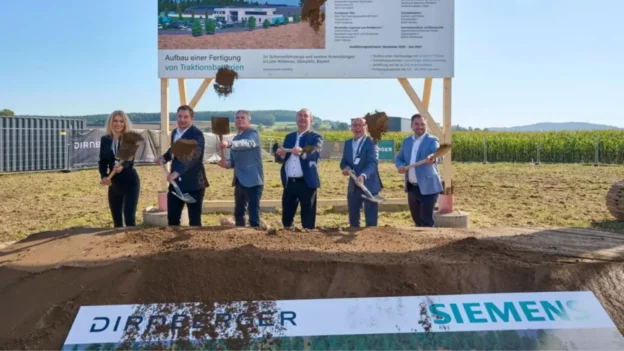Siemens Mobility has started construction of a modern battery plant in the Bavarian town of Luhe-Wildenau. The 20,000-square-meter plant will be used for the production of energy storage systems. energy storage systems for regional trains for regional trains, locomotives and external customers, consolidating Germany’s role in the electrification of rail transport.
Industrial promotion and local employment
With a total investment of 35 million euros, partly financed by the state of Bavaria, the project aims to strengthen technological competitiveness in the railway sector. Siemens Mobility will contribute 22 million, while the regional government will contribute 2.7 million through industrial promotion programs. The plant is expected to generate up to 200 skilled jobs in a key region of the Upper Palatinate.
The new facility will manufacture complete battery systems, including the development of a Battery Management System (BMS) in collaboration with Stercom.
This technology is essential to ensure the performance and operational safety of railway units using battery-electric propulsion. battery-electric propulsion .
Capacity and modularity of the battery plant
It is estimated that the plant will be able to produce up to 120 MWh per year in battery systems. battery systems operating in three shifts. These systems will have storage capacities of up to 2,000 kWh in locomotives and about 500 kWh in regional trains.
Siemens’ strategy includes a modular family of batteries that can be adapted to different transportation needs.
Commitment to German industry
According to Siemens Mobility CFO Karl Blaim, this initiative contributes to the transition to more sustainable rail transport. to a more sustainable rail transport . Series production will begin in October 2027, following completion of the construction work in the spring of the same year.
It is also a strategic step in the “Made for Germany” initiative, which reinforces the country’s capacity to develop its own energy solutions in a context of growing demand for electric mobility.
Source and photo: Siemens Mobility

